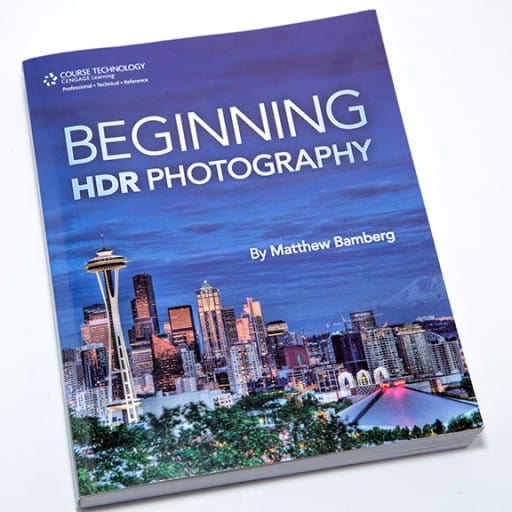 I recently read the Beginning HDR Photography book by Matthew Bamberg. While I may be pretty advanced in this HDR stuff, it is always a great idea to see another HDRtist’s perspective. This is no exception with Mr. Bamberg’s HDR book. There is a quite a bit of great information in it, however, there are a few issues that I noticed as well.
I recently read the Beginning HDR Photography book by Matthew Bamberg. While I may be pretty advanced in this HDR stuff, it is always a great idea to see another HDRtist’s perspective. This is no exception with Mr. Bamberg’s HDR book. There is a quite a bit of great information in it, however, there are a few issues that I noticed as well.
For the sake of conformity, I will keep the review in the traditional EverydayHDR format, The Good, The Bad, and The Bottom Line.
The Good:
- The first half of the book places a strong focus on all of the different characteristics essential to understand before getting into HDR. This is very valuable information for the HDR photography beginner as it ties in common photography nomenclature to the HDR process.
- From Brightness and Contrast to the different types of digital cameras, Mr Bamberg sets up the scene for the HDR process by explaining many important attributing factors to HDR photography. He focuses a great deal on getting it right from the beginning with a plethora of great information.
- Mr. Bamberg does a great job of breaking down some complex aspects of not only HDR photography, but photography in general and putting them into easy to read and comprehend ideas.
The Bad:
- There are a few generalizations and blanket statements that distract from the content which may lead beginning photographers astray. For instance, “You can make an HDR image with one flash exposure, but if there are any dark areas in the image you’ll get substantial noise.” While that is true in some cases, statements like that can put the doldrums in some beginner’s sails and they may never experiment with it. Some things are better left unsaid.
- Many of the pictures in the book do not match the caliber of the written content contained within it. If I were a beginning photographer there is not a single photo in the book that would make me say, “Wow, I want to try this HDR stuff!”
- No real mention of what you do after you have your HDR tone mapped image. It is imperative to know that the processing does not stop after tone mapping. The photo needs quite a bit of work after you receive the HDR tone mapped image to take it to the next level. There is mention of removing Halos, noise and vignetting, but it falls short of any helpful information on how to make that HDR image pop with post processing techniques.
The Bottom Line:
There is a wealth of information strewn about a book with less than ideal pictures for the HDR process. The value of the content is good for the most part with some minor exceptions. It would be a good place for a novice photographer to start learning about the HDR process, however, it is not the end all HDR photography book. The price point is a bit steep compared to the competition in the market, but the quality of the written content makes it well worth it.








